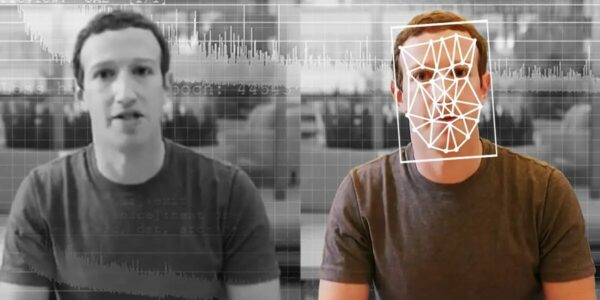An example of a deepfake is using artificial intelligence technology to create a video or audio clip that shows someone saying or doing something they did not say or do. This can be used maliciously to spread false information or manipulate public opinion.
Table of Contents
What are Deepfakes?

Deepfakes are manipulated videos or images that use artificial intelligence and machine learning algorithms to create realistic but fake content. They can be used to make seemingly actual footage of people saying or doing things they never did. This technology has raised concerns about the potential for misinformation and deception in media.
How Do Deepfakes Work?

Deepfakes refer to media, such as videos or images, manipulated through artificial intelligence and machine learning algorithms to depict someone saying or doing something they did not say or do. This technology has garnered attention recently due to its potential for spreading misinformation and deceiving people.
How Do Deepfakes Work?
- Gathering Data: The first step in creating a deepfake is gathering data or footage of the target person. This could include images, videos, and audio recordings of the person’s face and voice.
- Training the Algorithm: After collecting data, the next step is to train a deep learning algorithm using this data. The algorithm analyzes the target person’s facial features and expressions and creates a digital model of their face.
- Manipulating Facial Expressions: Once the algorithm has created a digital model of the target person’s face, it can manipulate their facial expressions by altering specific points. For example, if the target is smiling in one video, the algorithm can make them frown in another video.
- Mapping onto Another Face: Now comes the crucial step of mapping the manipulated facial expressions onto another face with similar features using a technique called “face swapping.” This could be done by taking footage from another person who resembles the target or using a pre-existing photo or video of them.
- Refining Details: To ensure the final deepfake looks realistic, additional editing techniques may be used to refine details such as skin texture, lighting, and hair movement.
- Creating Audio Synthesis: In some cases, deepfakes may include manipulated audio recordings of the target’s voice. This is achieved through voice cloning technology that converts written text into spoken words, mimicking the person’s voice.
- Final Product: Once all elements have been added and refined, a convincing deepfake video shows the target person saying or doing something they never actually did.
In conclusion, deepfakes are created by manipulating media content using artificial intelligence and machine learning algorithms to deceive viewers. These techniques are becoming increasingly sophisticated, making detecting fake videos and images challenging. It is essential to remain vigilant while consuming media and verify the authenticity of any potentially manipulated content.
How Did Deepfake Technology Evolve?
Deepfake technology has evolved significantly over the years. Here is a detailed explanation of its evolution in less than 100 words.
- Development of face-swapping software: In the early 2000s, software like Adobe After Effects and FakeApp was introduced, allowing users to swap faces easily in videos.
- Advancements in machine learning and AI: With the advancement of machine learning and AI algorithms, deepfake technology has become more sophisticated, making it easier to manipulate videos realistically.
- Availability of training data: Large datasets for training models on human facial expressions and movements have also improved the quality of deepfakes.
- Spread on social media: With the rise of social media platforms, deepfake videos gained popularity among users, leading to their widespread use.
- Creation of dedicated tools: Several dedicated deepfake tools like DeepFaceLab and FaceSwap have been developed, making it easier for non-technical users to create convincing fake videos.
- Constant evolution: As technology continues to evolve, so does deepfake technology. We can expect further advancements in this field with improved image and video manipulation techniques.
How to Spot a Deepfake
- Understand what a deepfake is: Deepfakes are videos or images manipulated using artificial intelligence and machine learning techniques to make it appear like someone is doing or saying something they never actually did.
- Pay attention to facial expressions: One key way to spot a deepfake is by looking at the subject’s facial expressions. If they seem unnatural, choppy, or out of sync with their words, it could be a sign that the video has been manipulated.
- Look for inconsistencies: Deepfakes can also have inconsistencies in lighting, shadows, and background elements. Look for any discrepancies that don’t match the rest of the video.
- Check for blurriness or distortion: Another tell-tale sign of a deepfake is blurriness or distortion around the edges of the subject’s face or body. This can happen when different elements are spliced together in the editing process.
- Listen closely to audio: Since deepfakes use AI to manipulate both video and audio, pay attention to any unnatural pauses or changes in tone while listening to the subject’s voice. These could be indicators that the audio has been altered.
- Compare to other sources: If you’re unsure whether a video is real, try finding other sources of the duplicate footage from different angles or perspectives. If there are significant differences between them, it could be a sign that one version has been altered.
- Be aware of social media trends: Deepfakes often become popular on social media platforms like TikTok and Instagram, so it’s essential to be aware of current trends and know how to spot potential fakes.
- Use fact-checking tools: Several online tools can help detect deepfakes by analyzing visual and audio cues in a video.
- Stay informed: As technology advances, so do deepfake techniques. It’s essential to stay informed and continue learning about new methods and tools used to create them.
- When in doubt, seek professional help: If you suspect a video or image has been manipulated, it’s best to seek help from professionals who can verify its authenticity. These could include forensic experts or digital media specialists.
How Can Deepfakes Threaten My Business?
Deepfakes can seriously threaten businesses by damaging their reputation, causing financial loss, and compromising sensitive information. As deepfake technology advances, it becomes more difficult to distinguish between real and fake content, leading to potential confusion and mistrust among customers and stakeholders.
This can result in a decrease in sales and trust, ultimately impacting a business’s overall success. Additionally, deepfakes can be used for fraud and cyber attacks, putting businesses at risk for data breaches and financial damages.
Defending Against Deepfakes
Defending against deepfakes can be done by increasing public awareness and education about the existence of deepfakes, implementing stricter content verification processes, and investing in advanced technology for detecting and removing deepfake videos. It is also essential to have a solid legal framework to hold creators of malicious deepfakes accountable.
Frequently Asked Questions on Examples of Deepfakes
What are some examples of deepfakes?
TikTok’s Tom Cruise deepfakes
These manipulated videos use artificial intelligence (AI) technology to impersonate actor Tom Cruise on TikTok’s popular social media platform. They have caused controversy as they appear almost indistinguishable from the real actor, raising concerns about the potential for misinformation and manipulation.
President Obama deepfake
This is a fake video or audio clip that uses AI technology to make it seem like former President Barack Obama is saying or doing something he did not. These types of deepfakes can spread false information and manipulate public opinion.
Mark Zuckerberg deepfake
This refers to a manipulated video featuring Facebook CEO Mark Zuckerberg created by artists to raise awareness about the dangers of deepfakes. The video was meant to show how easily people can be misled by these types of videos, even if they know they are unreal.
What is a positive example of a deepfake?
A positive example of a deepfake could be using this technology for entertainment, such as creating a convincing digital double of a deceased celebrity in a film or TV show. It could also potentially be used for educational purposes, such as recreating historical events in a more immersive way for students.
How to make a deep fake video?
To make a deep fake video, one would need access to specialized AI software or apps that use machine learning algorithms to manipulate existing footage and create realistic-looking fake videos. These apps often require advanced technical skills and can be expensive.
What app is used for deepfake?
Some popular apps for creating deepfakes include DeepFaceLab, Faceswap, and FakeApp. However, due to ethical concerns surrounding the misuse of this technology, many platforms have banned or restricted access to these apps.
Final Thoughts
In summary, a deepfake is an example of artificial intelligence and advanced technology used to manipulate and distort reality. It can potentially cause harm by spreading misinformation or damaging someone’s reputation. However, with proper education and awareness, we can combat the negative effects of deepfakes and use them for positive purposes such as entertainment or education.
